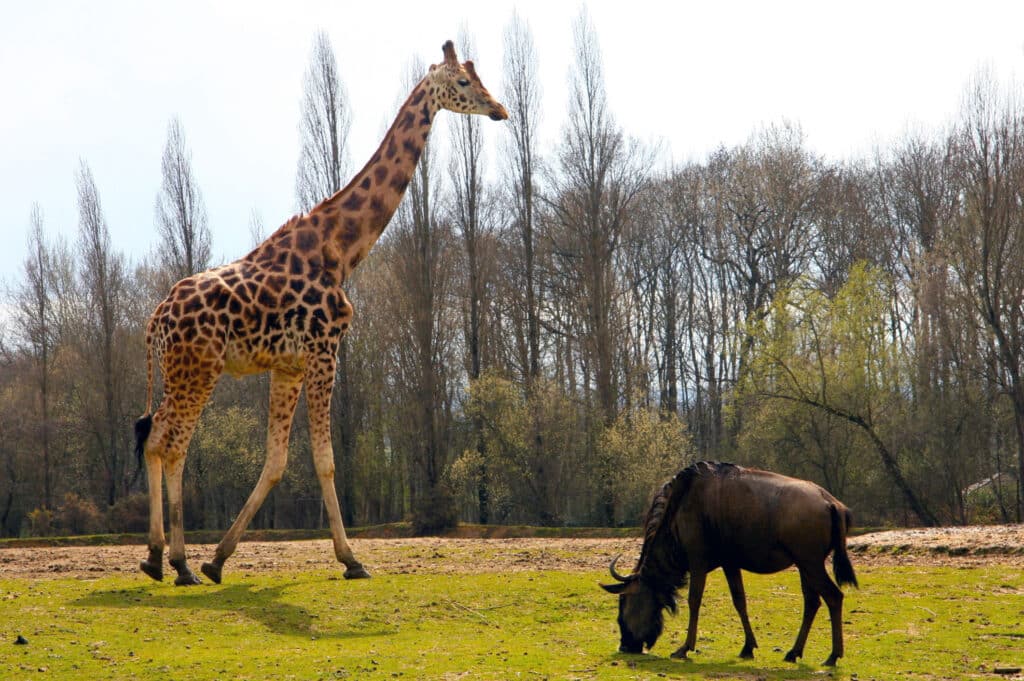
The entrance fee for the Paris Zoological Park in 2025 is €22 for visitors aged 13 and over, and €17 for children from 3 to 12 years old. Children under 3 can enter free of charge, though a ticket is still required. From May to September, the park generally opens its gates at 9:30 a.m. and closes at 6:00 p.m., while from October to April, the typical hours are 10:00 a.m. to 5:00 p.m. We visited the park on February 13, 2025, and all the information provided here was valid as of that date.
About the Paris Zoological Park
Originally inaugurated in 1934, the Paris Zoological Park was conceived as a landmark project aimed at studying and preserving wildlife. Over the decades, it has undergone various modernization efforts to enhance animal habitats, improve visitor facilities, and reinforce the park’s commitment to conservation. Organized into five main biozones—Patagonia, Sahel-Sudan, Europe, Guyana, and Madagascar—the park offers an immersive journey through distinct ecosystems. We suggest beginning with the Madagascar zone, where visitors can observe lemurs and unique reptile species in a setting that replicates their lush natural surroundings.

Paris Zoological Park
One of the park’s most recognizable features is the 65-meter-tall artificial rock, which was built to emulate a rugged mountain environment. This iconic structure has remained a centerpiece of the park, symbolizing its early architectural vision of blending nature and design. Within each biozone, a combination of indoor pavilions, open-air enclosures, and carefully curated landscapes helps to simulate real habitats as closely as possible. We recommend attending at least one scheduled feeding session or keeper talk to gain additional insights into the daily care and behavioral patterns of the animals. These presentations provide a better understanding of species-specific challenges and highlight the importance of global conservation projects.
For those interested in the park’s history, informative panels scattered throughout offer glimpses into its founding principles, major milestones, and ongoing efforts to protect endangered species. We advise setting aside a minimum of three hours for a thorough exploration, although dedicated wildlife enthusiasts might want to spend even longer. Comfortable footwear is especially important due to the park’s large footprint, and we believe exploring each biozone in sequence is a rewarding way to appreciate the full breadth of the exhibits.
Nearby Attractions
Situated near the scenic Bois de Vincennes, the park is close to the historic Château de Vincennes, known for its medieval fortress and serene gardens. We suggest adding the château to your itinerary if time permits, as it offers a contrasting experience of French heritage. For a satisfying meal in the area, Restaurant Le Bois serves traditional French dishes and is located within walking distance of the park. Another option is to enjoy a casual break at one of the small cafés near the entrance, where visitors can relax with a hot drink or quick snack before continuing their day.
We recommend browsing the on-site gift shop for souvenirs relating to the park’s conservation projects. There are also a few boutique stores just outside the entrance that carry local crafts and nature-themed merchandise. Whether exploring the five biozones or taking a leisurely stroll around the nearby parklands, we believe a visit to the Paris Zoological Park offers an educational and enjoyable day out, enriched by the diversity of wildlife and the area’s cultural attractions.

